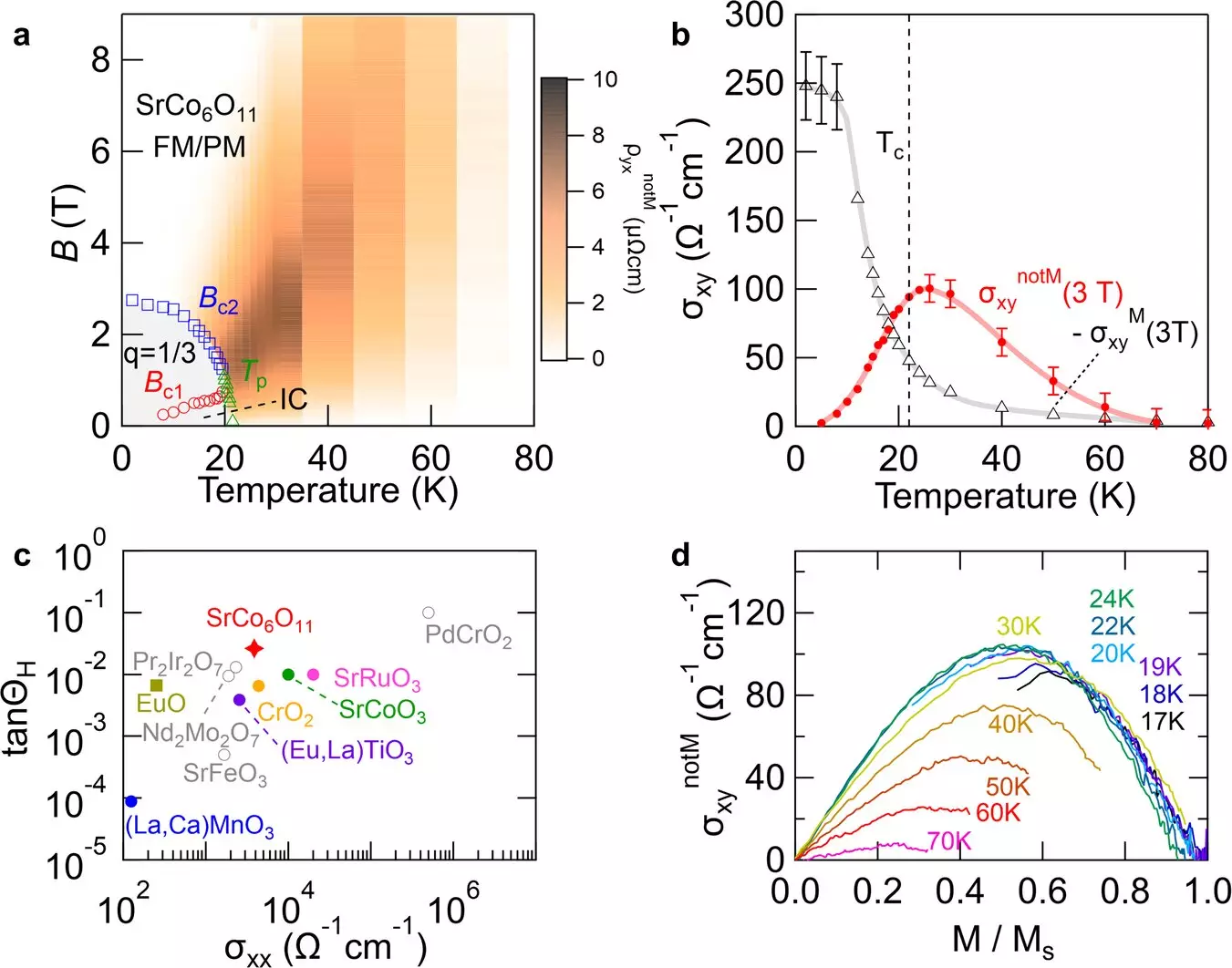The research team at the University of Tsukuba made a groundbreaking discovery regarding electron spins in magnetic materials. They found that fluctuations in these spins can trigger a large anomalous Hall effect during a phase transition known as the devil’s staircase magnetic transition. This finding is crucial for the progression of magneto-thermoelectric conversion, a technology aimed at sustainable power generation. The implications of this discovery could pave the way for the development of innovative thermoelectric conversion materials.
The Hall Effect Phenomenon
When an electric current passes through a metal sample in a magnetic field, it encounters the Lorentz force, which results in the generation of a voltage perpendicular to the magnetic field and current. This phenomenon is commonly referred to as the Hall effect. In magnetic metals, a similar occurrence, known as the anomalous Hall effect, can take place independently of an external magnetic field, especially in ferromagnetic materials where electron spins are aligned. Typically, this alignment leads to the manifestation of the anomalous Hall effect below a specific temperature referred to as the magnetic transition temperature. However, above this temperature, the disordering of spins results in the weakening of the anomalous Hall effect.
The research team observed a substantial anomalous Hall effect in the magnetic material SrCo6O11, even at temperatures surpassing the magnetic transition temperature. This material showcases a unique magnetic transition phenomenon termed the “spin-fluctuating devil’s staircase.” The magnitude of the anomalous Hall effect in this material, known as the anomalous Hall angle, ranks among the highest ever recorded for magnetic oxides. The study indicates that the intensified scattering of conduction electrons due to a specific type of spin fluctuation, namely spin-flip fluctuation, is likely responsible for this significant anomalous Hall effect. This unprecedented finding holds significant promise for the advancement of magneto-thermoelectric conversion technology.
The research findings provide a novel approach to designing materials for magneto-thermoelectric conversion technology. By understanding the mechanisms behind the large anomalous Hall effect in SrCo6O11, researchers can explore new avenues for creating high-performance thermoelectric conversion materials. This discovery could have far-reaching implications for the development of sustainable and efficient power generation technologies.


Leave a Reply